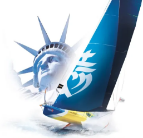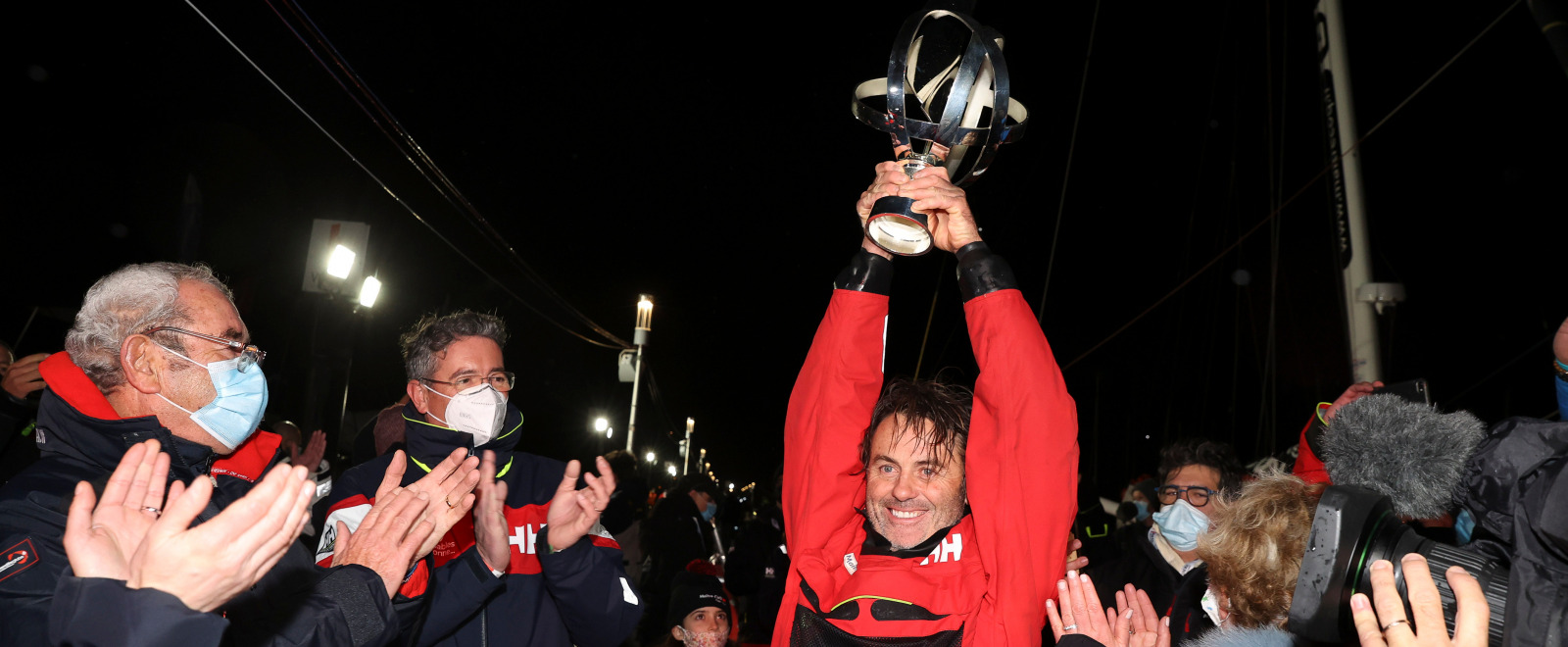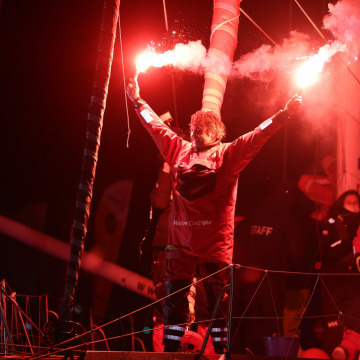He led the fleet for long stretches of the race, topping the leaderboard 157 times and proving virtually unbeatable in the south. It’s a marked contrast to his first attempt at the Vendee Globe, which ended with dismasting only hours after the start. After that experience he didn’t return to the race for more than a decade.
Maître CoQ lV is first Verdier – VPLP designed foiler, Morgan Lagravière’s former Safran from 2015. With this boat he scored a second place in the 2019 Bermudes 1000 race, and sixth in last year’s Vendée-Arctique-Les Sables d’Olonne.
Perhaps bearing memories of his premature abandonment in the 2008-9 race, when he was one of the first forced out, he routed cautiously in the big weather of the early stages of this Vendée Globe and his performance didn’t shine until the fleet had almost reached the Roaring Forties. But then two perfectly timed gybes then lifted him into the top five behind Dalin, Ruyant, Escoffier and Le Cam.
Bestaven’s early progress in the south was interrupted by a heart-stopping night on November 30 supporting the search, along with Jean Le Cam, Sébastien Simon and Boris Herrmann, for Kevin Escoffier’s liferaft after PRB broke up and sank within a few minutes.
When he got back in the race, Maître CoQ IV was more than 400 miles behind the leader, Apivia, The subsequent award of 10 hours 15 minutes redress by the International Jury to Bestaven kept the race open until the final hours of the race.
Bestaven, with his 2015 boat and its more modest sized foils, proved especially able to push his boat hard in the confused seas and big winds of the Indian Ocean and pulled away from the peloton, closing on leaders Charlie Dalin and Thomas Ruyant, before then breaking away into the lead south west of Tasmania on December 16. He then emerged out of a high pressure system which effected a remarkable restart in the Pacifc just after Christmas to celebrate his 48th birthday with a growing lead, which he had extended to nearly 15 hours over Charlie Dalin at Cape Horn. .
But from there he was impressive in the South Atlantic, putting a 434 mile lead on Dalin and Ruyant. But this didn’t last. His progress was cruelly blocked by the semi permanent cold front that sits off Brazil’s Cabo Frio, by Rio. Over three frustrating days his lead evaporated. And the evening of Day 65 saw an unprecedented restart after almost 20,000 miles of racing. With the top five boats now less than 30 miles apart, and four more within a further 80 miles, the race was wide open again.
After losing his lead it was back in the North Atlantic that Bestaven revealed he had in fact suffered damage as he was rounding Cape Horn in the most difficult conditions of his race, 50kts winds and big seas. His pulpit was ripped off, he lost a furler and some of his sails could no longer be used.
Maître CoQ lV was the westernmost boat among the leaders at this stage and the advantage passed to those further offshore immediately to the east – APIVIA, Bureau Vallée 2 and LinkedOut. This trio, accompanied by Boris Herrmann’s Seaexplorer – Yacht Club de Monaco, were later the first to break out of the doldrums, thus extending their advantage over Bestaven.
Nevertheless, Bestaven continued to press hard and made the big call to route north of the major islands in the Azores archipelago. This traded extra distance for potential for more speed in the stronger winds associated with a massive low pressure system forecast to replace a weak high pressure ridge in the Bay of Biscay in the final few hours of the race.
This strategy not only returned him to overall contention at the heart of thrilling finale that left the overall result hanging in the balance, even after the first three boats had crossed the finish line of Les Sables d’Olonne.
Yannick Bestaven/Maître CoQ lV statistics:
He covered the 24,365 miles of the theoretical course at an average speed of 12.6 knots .
Actual distance covered on the water: 28,583.80 at the actual average speed of 14.78 knots.
Equator (outward bound)
9th on 19/11/2020 at 0821hrs UTC after 10d 19hrs 01mins,
19hrs 02mins after the leader, HUGO BOSS
Cape of Good Hope
8th on 02/12/2020 at 0844hrs UTC after 23d 19hrs 24mins,
1d 09hrs 33mins after the leader, Apivia
Cape Leeuwin
3rd on 13/12/2020 at 1446hrs UTC after 35d 01hrs 26mins,
03hrs 20mins after the leader, Apivia
Cape Horn
1st on 02/01/2021 at 1342hrs UTC after 55d 00hrs 22mins
Equator (return leg)
5th on 17/01/2021 at 0236hrs UTC after 69d 13hrs 16mins,
7hrs 24mins after the leader, Bureau Vallée
Leadership
16th December 0800hrs UTC to 25th December 0800hrs UTC
26th December 0400hrs UTC to 11th January 2100hrs UTC
13th January 0400hrs UTC to 13th January 1100hrs UTC
Best 24-hour run
31st December, 482.32 miles averaging 20.1 knots










